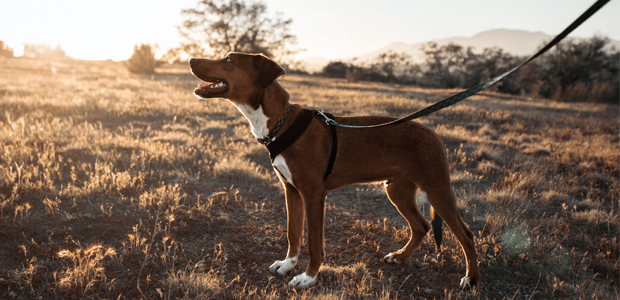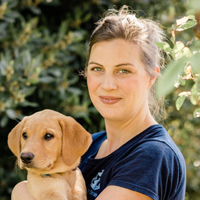Effective Techniques to Prevent Dogs from Pulling on the Lead
Are you having problems with a dog that won’t stop pulling of the lead? You’re not alone. A lot of dog owners struggle with walking nicely on the lead, often giving up and putting up with sore arms and a pooch that strains and struggles.
We’ve got some top tips to turn your pulling pooch into a super stroller.
Why it’s important for dogs to be able to walk nicely on the lead
Walking nicely on a lead means that you have control over your dog. This is an infinitely useful thing to have, especially in situations that require a calm approach, such as walking roadside or by livestock.
Stopping your dog from pulling improves both of your experiences and make walking a truly joyous activity, rather than a shame-inducing palaver that’ll have you dashing home before your pooch has had enough exercise.
Lots of dog owners have experienced a pooch that pulls, but with patience and training, you’ll be gliding along in harmony in no time.

Why do dogs pull?
One of the main reasons that dog’s pull is because they have learnt that it gets them to places they want to go. Over a period of time they have worked out that when they tug forward, their owner follows.
Your dog might not have learnt that walking on a loose lead pays off. Train your dog in different environments with increasing levels of distraction. They key is to stay patient and consistent.
Pulling on the lead can be a tough habit to break, and in many cases, it can be a lifelong problem. It can cause arm, shoulder and back injuries in owners and skin sores, neck strains and muscular injuries in dogs.
Making sure that your dog is calm and controlled on the lead will make walkies so enjoyable for both of you.
Read more: When can I take me puppy for a walk?
How to get dogs to stop pulling
Whether your dog is a puppy, a rescue, or has had a life-long stubborn streak when it comes to walking on the lead, there are ways in which you can improve their bad-walking habits.
Of course, prevention is better than cure, so preventing your young puppy from ever learning to pull on the lead is the best course of action!
Reward your dog for staying by your side
This is a great place to start. Start off the lead in a relaxed environment, at home or in the garden, and reward your dog when they come near you.
It’s best to use high-value rewards, such as cheese or chicken to give them an extra incentive. This will teach your dog that being close to you results in tasty treats.
Introduce the lead
Once they get the hang of the first stage, introduce a lead. Keep the treats coming and praise your dog for staying close to you. Give them plenty of encouragement as this will help to build trust between you and your dog.

Start to walk
Keep up the praise and steady supply of treats for good behaviour as you start to move forward, with your dog by your side on the lead. Be patient and positive, some dogs will be breaking the habit of a lifetime.
The main thing that you want your dog to understand is that a loose lead is a good lead. When they start to tug and the lead becomes tight, stop walking, and don’t start again until the lead becomes slack.
Be patient
It can be frustrating if your dog is making progress and then starts to tug during training, but be patient and remain calm if this happens. Do not drag your dog backwards or scold them, instead wait quietly for them to stop pulling.
When they get the hang of sticking close to you as you walk together on the lead, you can up the ante by introducing distractions (such as treats or toys) and changing direction. Practice in short and regular sessions.
If your pooch is making real strides, you can scale back how often you reward them to help to prepare them for walking in public.
Expert info: A dog’s natural walking pace will differ depending on their size. Smaller dogs will walk slower than us whereas larger breeds will walk at a quicker pace. Matching a dog’s natural walking will aid lead walking; be sure to reward them for sticking by your side.

What are the best leads/collars/harnesses?
There are lots of different leads, collars and harnesses on the market, so it can be tricky to choose the right one for your dog. Consider your dog’s size, age and level of training when choosing which one to go for.
Fixed length leads
Fixed length leads, give you control as your dog learns to walk with the slack. Because they don’t rely on mechanisms to determine the length, there is no chance that the lead will malfunction.
Extendable leads
Extendable leads give your dog freer rein. This works for some owners, however, in order for them to extend, the dog has to pull against the tension, so it can be counterproductive to teaching dogs to walk on a loose lead.
Harness or collar
This really depends on what breed of dog you have. Some dogs have delicate necks or are prone to breathing problems, and so a collar isn’t suitable for them.
Steer clear of any equipment that will cause your dog pain or discomfort by tightening when the dog pulls. This will only make walking a negative experience.
Need more info?
For expert advice on walking or any aspect of your dog’s healthcare, contact your local vet. Find your nearest vet using our Find a Vet page.

